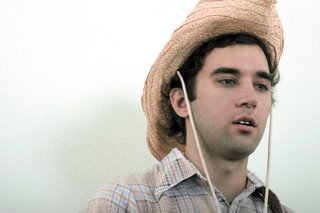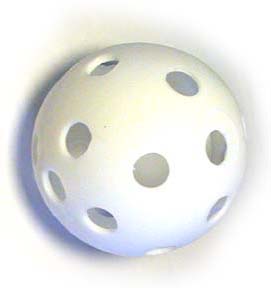Thursday, July 13, 2006
the decline of art and civilization and all that
Here's a weird little interview with Sufjan Stevens on salon.com.
Wednesday, July 12, 2006
defending sufjan stevens

Yesterday, Stephen Thomas Erlewine, who I believe is the principal editor over at allmusic.com, posted "The Case Against Sufjan Stevens." The essay essentially criticizes Stevens and the adulation he has received from music critics; you can read it here.
I don't have a problem with people not liking Stevens' music, but I found Erlewine's tone and the assumptions that underpin his argument rather troubling. Here is what I wrote as part of an online threaded discussion over at emusic.com:
[This is in response to a fellow emusic subscriber who felt that Erlewine was not attacking Stevens per se, but was instead merely characterizing his music]
I take your point, and I think it is worth distinguishing between criticism or art and attacks on those who produce such art.
But even Erlewine titles his essay "making a case against Sufjan Stephens," suggesting that he is as much troubled by Stevens (and I suppose those who praise him) as he is by the music Stevens writes. "Adolescent fascination" and "precocious" (not to mention "his pretension and childish preciousness") are terms better suited to describe artists than they are to describe art. Certainly his final verdict--"Stevens is an overgrown teenager"--seems rather personal.
What bothered me most about the piece was the way in which Erlewine appears to be truly bothered by Stevens' fascination with art for art's sake and with his refusal to embrace the more solid--dare I say "burly"--aesthetics of the other singer/songwriters he admires (Randy Newman, Sean O'Hagen, et al.). The piece rests upon a disturbing subtext in which Erlewine bemoans Stevens' refusal to be the sort of (male) singer/songwriter that Erlewine can listen to without feeling uncomfortable. Erlewine isn't interested in the "schoolboy," "the drama student," "the adolescent high schooler" with his odd ideas--he's interested in "sophisticated" singer/songwriters. Given the various speculations about Stevens' sexuality that circulate on the Internet, it's hard not to read Erlewine's assessment as having somethign to do with that discussion. Erlewine even pinpoints Stevens "cloying song about Saul Bellow, his adolescent fascination with John Wayne Gacy, Jr." as though there were something distasteful about such interests. It strikes me that he might say something about the songs themselves rather than simply dismiss the sensibility that would find Bellow and J.W. Gacy interesting subject matter.
In fact, the essay contains very little discussion about Stevens' music that is substantive; Erlewine is content to brush it aside as mere "baroque folk-pop". It instead sneers at the kind of artist/persona that Erlewine feels Stevens cultivates, and I find troubling the assumption upon which his critique rests: we should reject artists who are precious and precocious artsy-fartsy overgrown boys who think they're smarter than everyone else and who have strange and silly tastes.
Stream or download several of Stevens' songs here.
Sunday, July 02, 2006
is this land made for you and me?
 This weekend I went to two dinner parties, and at the second, my host reminded me that I hadn't been keeping up with my blogging. It's always a boost to hear that someone cares whether I blog or I don't, so Kathee, this one's for you.
This weekend I went to two dinner parties, and at the second, my host reminded me that I hadn't been keeping up with my blogging. It's always a boost to hear that someone cares whether I blog or I don't, so Kathee, this one's for you.Friday night's party was a theme party. Not only were we asked to bring a contribution to the lovely meal (whose mean course consisted of an unusual and delicious eggplant and olive lasagna), we were also requested to bring along something that reflected our personal notion of independence. We heard poems by Rainer Maria Rilke and Mark Strand, pondered the etymology of the word "independence" (roughly it means "not hanging from something else"), and watched an excerpt from Merce Cunningham's Beach Birds.
My own contribution was to play "This Land Is Your Land" as performed by Sharon Jones and the Dap-Kings. (Listen to a sample here.) I love the way that Sharon Jones makes this song her own, fully immersing it in a funky soul vernacular, altering the phrasing ever so slightly. The opening bars entail a wary and tentative effort at patriotic brassiness, but the funky beat that immediately follows takes the song a new direction. Woody Guthrie's classic paeon to the American landscape is best known for its evocation of the Redwood Forest, the Gulf Stream waters, and New York Island. But it is also a critique of efforts to privatize such spaces:
As I was walkin' - I saw a sign thereThe song also poses a question that is as poignant today as when it was written in 1956:
And that sign said - no tress passin'
But on the other side .... it didn't say nothin!
Now that side was made for you and me!
In the squares of the city - In the shadow of the steeple
Near the relief office - I see my people
And some are grumblin' and some are wonderin'
If this land's still made for you and me.
Rather than examples of independence, both this white man's song and this black woman's treatment of it strike me as a fine example of interdependence: the ways in which Woody Guthrie needs Sharon Jones, the ways in which we need this land, the ways in which "you and me" need each other.
I know you're all asking yourselves, "Well what did you bring to the dinner?" I brought a white bean salad with zucchini and parmesan, an easy-to-make dish that seemed to go over well with the guests. There's no cooking involved, so it's perfect for the summer:
White Bean Salad with Zucchini and Parmesan
2 cans (15.5 oz.) white (cannellini) beans, rinsed and drained
3/4 lbs. zucchini (2 small), trimmed and quartered lengthwise, then thinly sliced
4 oz. green beans, trimmed and thinly sliced on the diagonal (about 3/4 cup)
2 oz. fresh parmesan, crumbled (about 1/2 cup)
1/2 cup fresh basil leaves, torn into small pieces
grated zest and juice of 2 lemons
1 tbsp. olive oil
coarse salt and ground pepper (to taste)
In a medium bowl, place all the ingredients and toss to combine.
I know it's sounds odd to include uncooked green beans, but if you cut them into small, thin rounds, they add a lovely crunch to the salad. Try it, and let me know what you think.
The second party was a small affair that began with mojitos.

For those of you who haven't had the pleasure of sipping on mojitos at the end of a warm summer's day, here is the blueprint:
Kathee's Mean Mojitos
(serves 4)
4 tbsp. sugar
12 or so mint sprigs
6 tbsp. fresh-squeezed lime juice
6 oz. light rum
club soda
ice
In a cocktail shaker, add ice cubes, sugar, mint leaves, lime juice, and rum. Shake vigorously allowing the sugar to dissolve and the mint to bruise.
Pour into four ice-filled tumblers and top off with club soda. Add a mint sprig and a wedge of lemon for garnish.
Repeat. Repeat. Repeat.
Even if, like me, you are wary of sweet drinks or of rum-based drinks, generally, you'll love the mojito. I know we did last night. Kathee was enjoying a non-stop giggle fest.
Dinner entailed giant spring rolls with a variety of fillings: grilled pork, chicken, rice noodles, grated carrots, bean sprouts, mint leaves, cilantro, peanut and hoisin sauces. On the side, we also had spicy tofu, coconut rice, and a sesame kale noodle dish that was exquisite. (If you are reading this, Kathee, post the recipe so I can make it at home.) Our first round of spring rolls involved some minor gaffs (we weren't rolling them tightly enough), but by the time we were on to seconds, we all were a little more adept at rolling and springing.
After dinner, Kathee whooped our collective asses at Scrabble. (Even when she's a boozy mess, Kathee's scrabbilities are awe-inspiring.) I, on the other hand, kicked ass at Upwords. Needless to say, this has become my new favorite game.
Let me know when you want to have mojitos and play Upwords. I'll be there with bells on and Sharon Jones in your CD player.
Subscribe to:
Posts (Atom)

